
Churches - Bevendean History Project

St Cuthman's Church, WhitehawkSt
Cuthman’s Church was built in the 1930s to meet the spiritual
needs of the people who were being moved from inadequate housing onto
the Whitehawk estate.
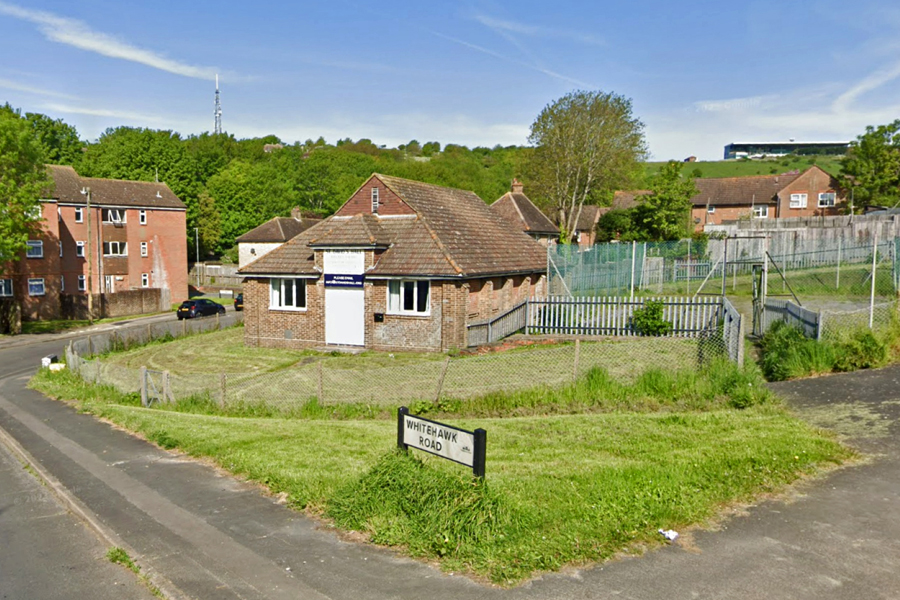
Ref: 2023-06-08_St David Hall - © Google Street View
St David's Mission Hall, still standing at the junction of Whitehawk Road and Whitehawk Way, was used before the church opened, and was later used by the Whitehawk and Manor Farm Boys' Club.
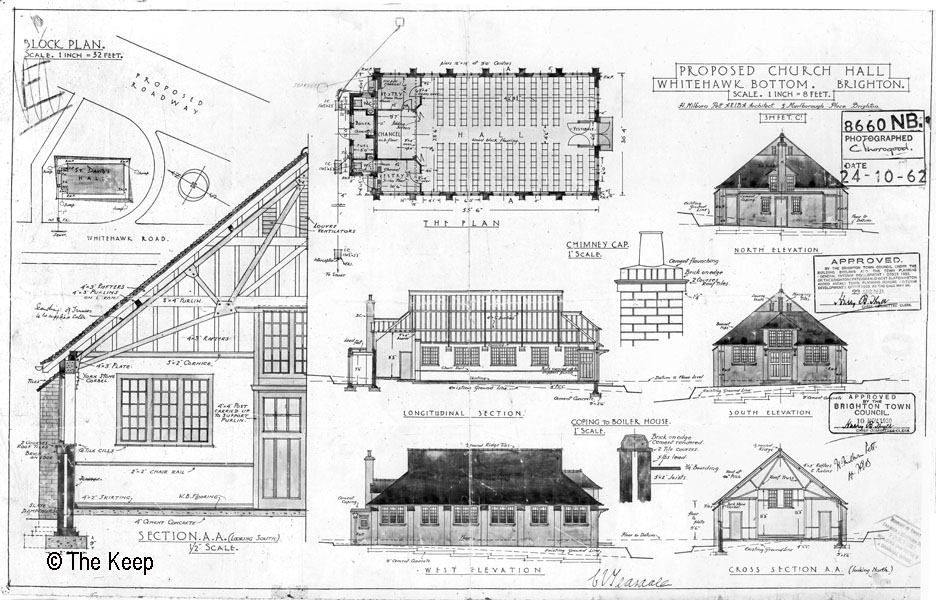
Plan for St David’s Mission Hall dated 04 November 1930.
Keep Ref: DB/D/134/8660
The Future St Cuthman’s, Whitehawk
Coming Dedication of Site
“The people of St Cuthman’s Whitehawk Brighton, are looking forward to St. Cuthman’s Day, 8th February 1936, when the site of the new church is to be dedicated by the Lord Bishop of the Diocese,” Says the writer of the monthly bulletin of the Sussex Church builders in the Chichester Diocesan Gazette.
“It is hoped to erect there a rough-hewn cross upon the spot where the altar will one day stand.
“All the children of Whitehawk will be invited, and we hope also that deputations from schools and parishes who have subscribed will join us on that day. After the ceremony there will be a gathering of children and friends in the Whitehawk Hall, at which the Bishop will speak”.
“We are most grateful for the way in which the boys and girls of the diocese are rallying to the help of St Cuthman’s church. More than £200 has been received since October, and the sum available for building now stands at £887. This is a far cry from our needed £4,000, but we hope for great things in 1936.”
From the Brighton and Hove Herald on 11 January 1936.
St Cuthman's Church was originally erected in Lintott Avenue in 1937, but was destroyed on 16 August 1943 by a German bomb with a Churchwarden buried alive. It was only six years old when it was destroyed by a Second World War bomb on 16 August 1943 by a German bomb with a Warden buried alive.
The Consecration of the Parish Church of St Cuthman at Whitehawk took place on Saturday the 28th of May 1938 at 6:00 p.m. in the evening. The service was presided over by the Right Reverend Hugh Hordern the Lord Bishop of Lewes.
On Sunday 29th of May 1938 the Bishop presided at Parish Communion with 68 people receiving the sacrements.
The church hall was sold to the community association in 1982 to become the Valley Social Centre. St David's Mission Hall, still standing at the junction of Whitehawk Road and Whitehawk Way, was used before the church opened, and was later used by the Whitehawk and Manor Farm Boys' Club.
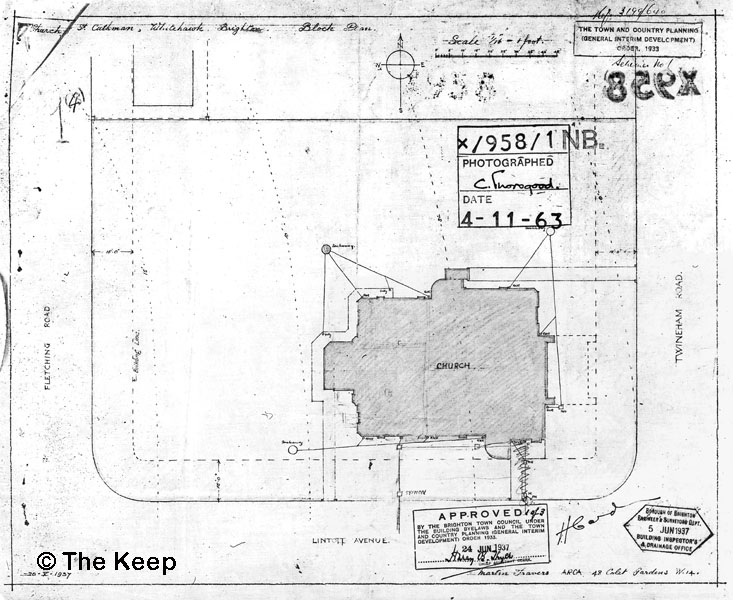
Site plan for the first church dated 20 May 1937
Keep Ref: DB/D/136/958/1 – Plan Approved 24 June 1937
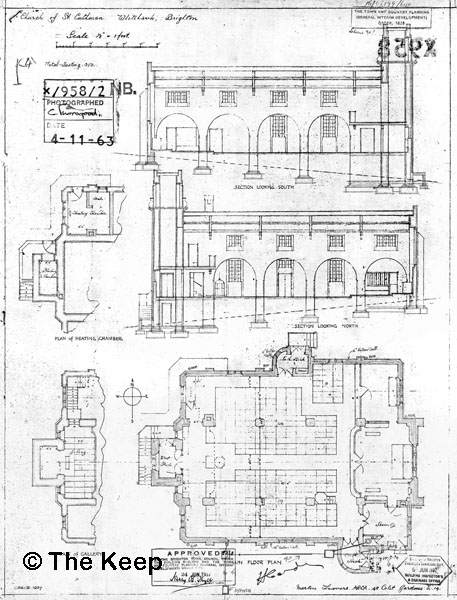
Keep Ref: DB/D/136/958/2 – Plan Approved 24 June 1937
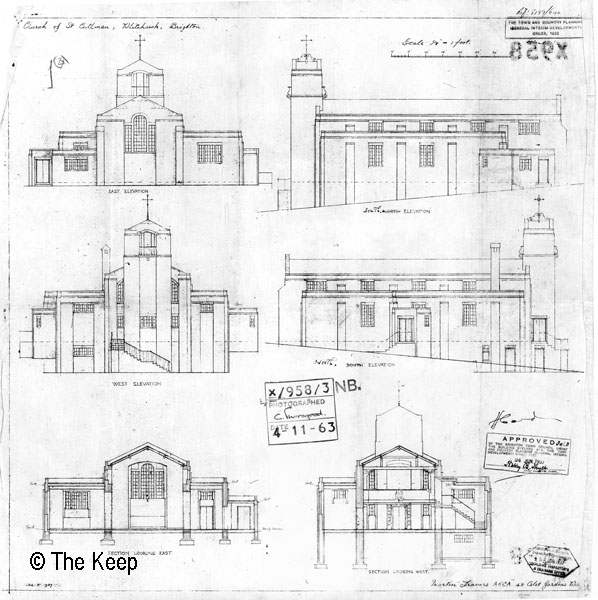
Keep Ref: DB/D/136/958/3 – Plan Approved 24 June 1937
Laying the foundation stone of St Cuthman’s Church on 9 October 1937.
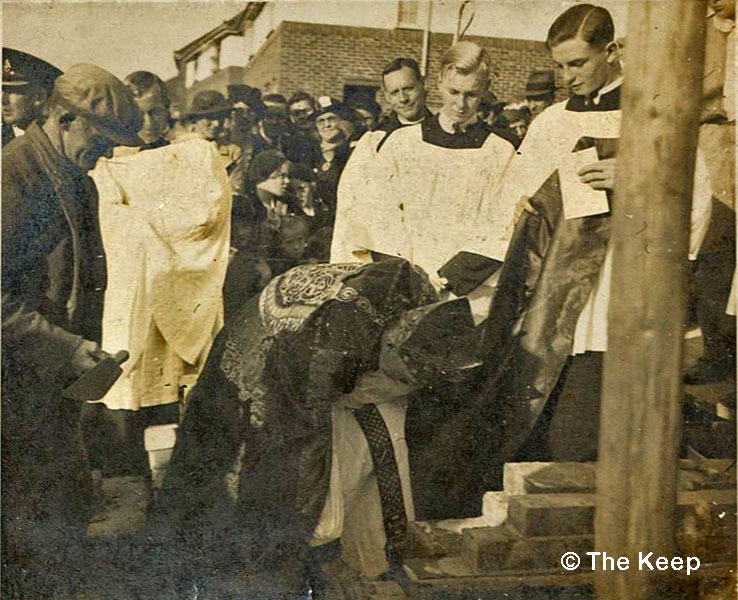
Keep Ref: ACC 13739/104
Lintott Avenue with the white church of St Cuthman's on the right hand side and Brighton Racecourse in the distance c1938.
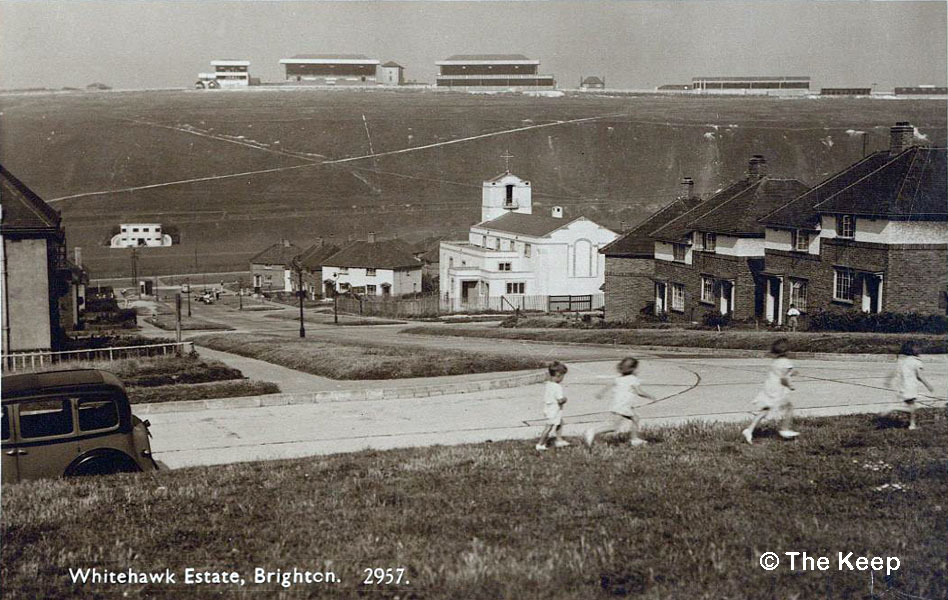
Keep Ref: AMS 6871/5/2 - c1938
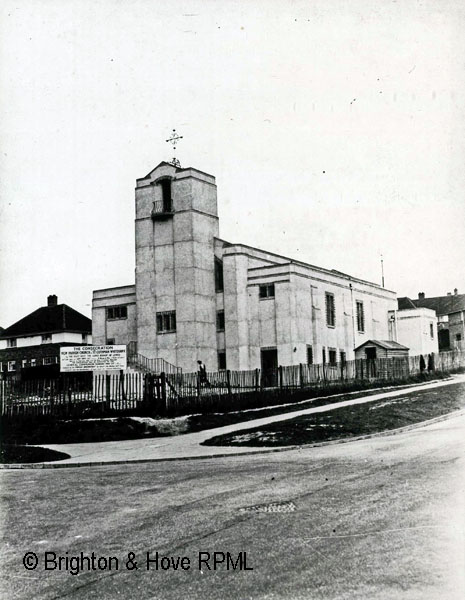
The original Church building in Lintott Avenue before it opened.
Brighton and Hove Museum Image Gallery Ref: HA926048 – c1938
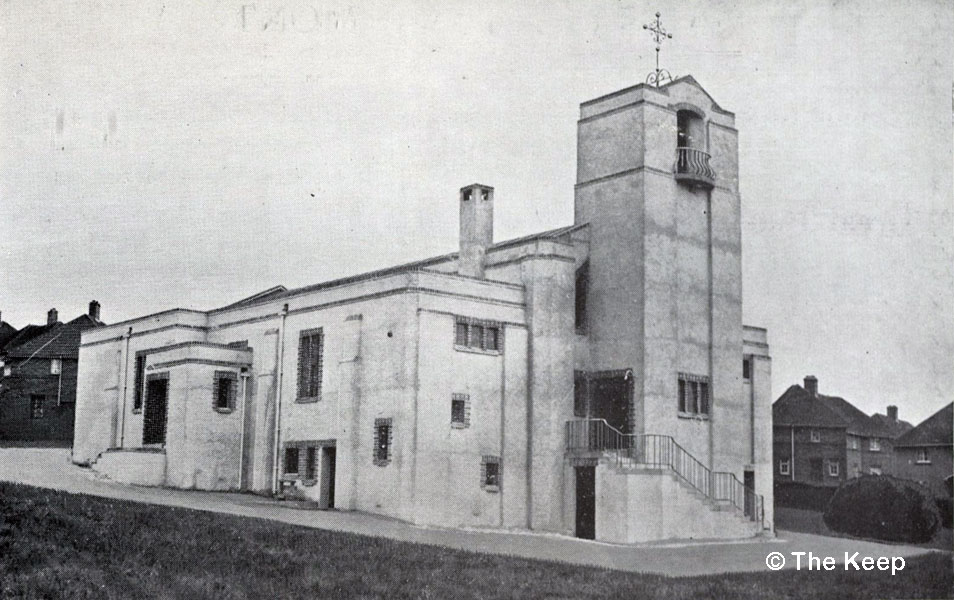
St Cuthman’s Church exterior after completion c1938.
Keep Ref: PAR 436/26/3
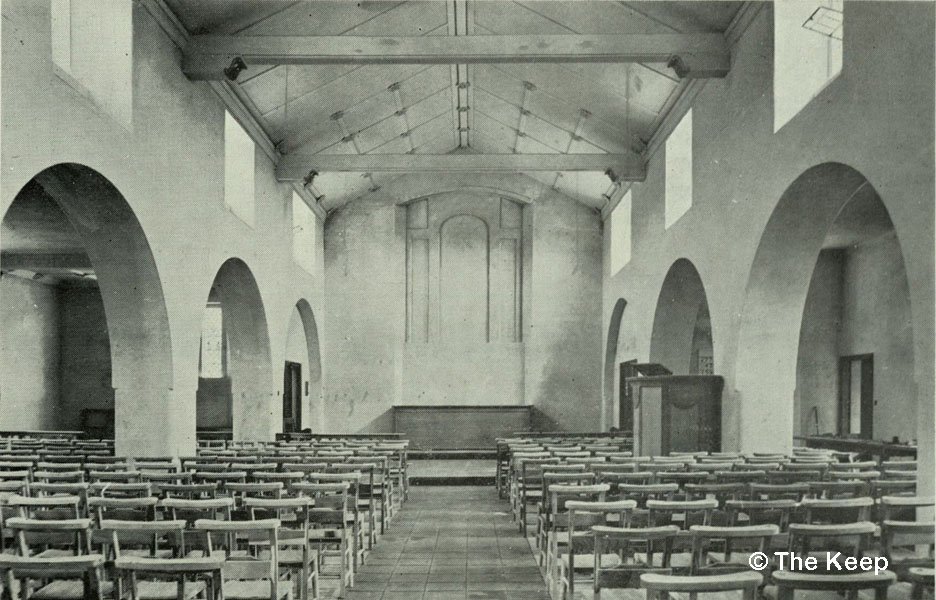
St Cuthman’s Church interior after completion c1938.
Keep Ref: PAR 436/26/3
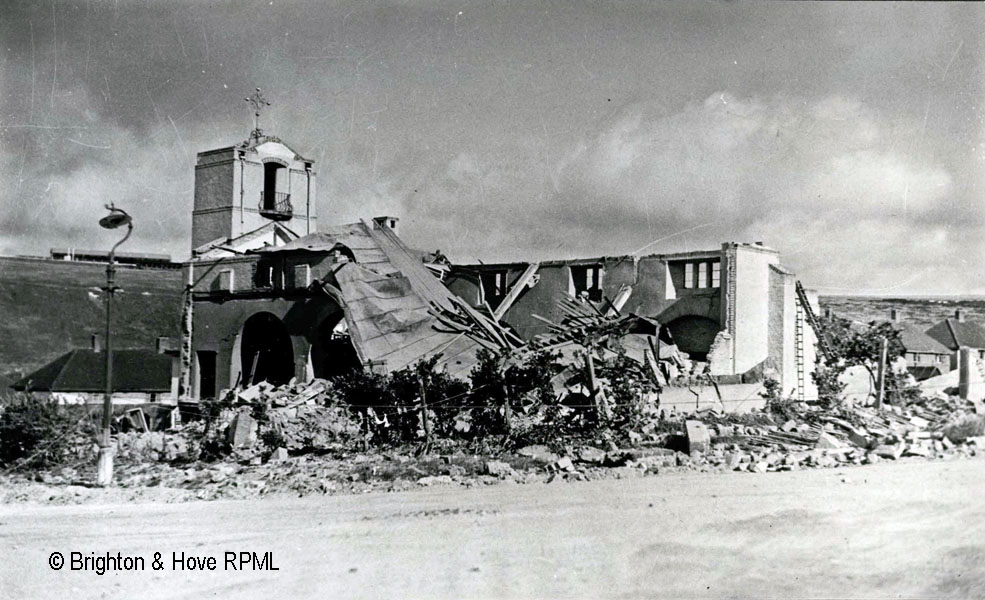
Brighton and Hove Museum Image Gallery Ref: HA926043 – c1943
On 16 August 1943, William Hayler, Air Raid Warden at St Cuthman's Church, Lintott Avenue was on duty at the church. He died as he was writing his warden's report. He had not been timetabled to work that night, but had swapped shifts as a favour to a friend. Two of his friends kept his allotment going and sold the produce to help his widow, while wardens and friends put on a concert at Whitehawk Boys' School to raise money for his family.
The New St Cuthman's Church

Ref: 2023-06-08_St David Hall - © Google Street View
St David's Mission Hall, still standing at the junction of Whitehawk Road and Whitehawk Way, was used before the church opened, and was later used by the Whitehawk and Manor Farm Boys' Club.

Plan for St David’s Mission Hall dated 04 November 1930.
Keep Ref: DB/D/134/8660
The Future St Cuthman’s, Whitehawk
Coming Dedication of Site
“The people of St Cuthman’s Whitehawk Brighton, are looking forward to St. Cuthman’s Day, 8th February 1936, when the site of the new church is to be dedicated by the Lord Bishop of the Diocese,” Says the writer of the monthly bulletin of the Sussex Church builders in the Chichester Diocesan Gazette.
“It is hoped to erect there a rough-hewn cross upon the spot where the altar will one day stand.
“All the children of Whitehawk will be invited, and we hope also that deputations from schools and parishes who have subscribed will join us on that day. After the ceremony there will be a gathering of children and friends in the Whitehawk Hall, at which the Bishop will speak”.
“We are most grateful for the way in which the boys and girls of the diocese are rallying to the help of St Cuthman’s church. More than £200 has been received since October, and the sum available for building now stands at £887. This is a far cry from our needed £4,000, but we hope for great things in 1936.”
From the Brighton and Hove Herald on 11 January 1936.
St Cuthman's Church was originally erected in Lintott Avenue in 1937, but was destroyed on 16 August 1943 by a German bomb with a Churchwarden buried alive. It was only six years old when it was destroyed by a Second World War bomb on 16 August 1943 by a German bomb with a Warden buried alive.
The Consecration of the Parish Church of St Cuthman at Whitehawk took place on Saturday the 28th of May 1938 at 6:00 p.m. in the evening. The service was presided over by the Right Reverend Hugh Hordern the Lord Bishop of Lewes.
On Sunday 29th of May 1938 the Bishop presided at Parish Communion with 68 people receiving the sacrements.
The church hall was sold to the community association in 1982 to become the Valley Social Centre. St David's Mission Hall, still standing at the junction of Whitehawk Road and Whitehawk Way, was used before the church opened, and was later used by the Whitehawk and Manor Farm Boys' Club.

Site plan for the first church dated 20 May 1937
Keep Ref: DB/D/136/958/1 – Plan Approved 24 June 1937


Keep Ref: DB/D/136/958/3 – Plan Approved 24 June 1937
Laying the foundation stone of St Cuthman’s Church on 9 October 1937.

Keep Ref: ACC 13739/104
Lintott Avenue with the white church of St Cuthman's on the right hand side and Brighton Racecourse in the distance c1938.

Keep Ref: AMS 6871/5/2 - c1938

Brighton and Hove Museum Image Gallery Ref: HA926048 – c1938

St Cuthman’s Church exterior after completion c1938.
Keep Ref: PAR 436/26/3

St Cuthman’s Church interior after completion c1938.
Keep Ref: PAR 436/26/3

Brighton and Hove Museum Image Gallery Ref: HA926043 – c1943
On 16 August 1943, William Hayler, Air Raid Warden at St Cuthman's Church, Lintott Avenue was on duty at the church. He died as he was writing his warden's report. He had not been timetabled to work that night, but had swapped shifts as a favour to a friend. Two of his friends kept his allotment going and sold the produce to help his widow, while wardens and friends put on a concert at Whitehawk Boys' School to raise money for his family.
The New St Cuthman's Church
